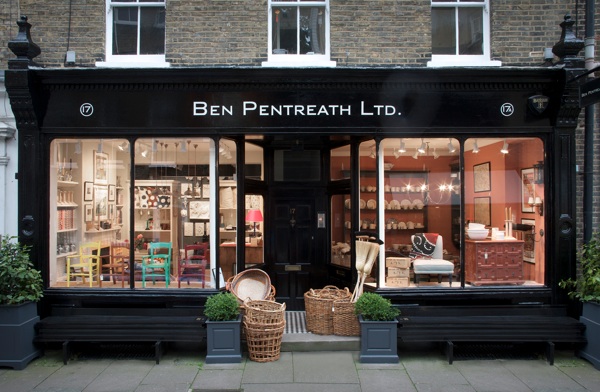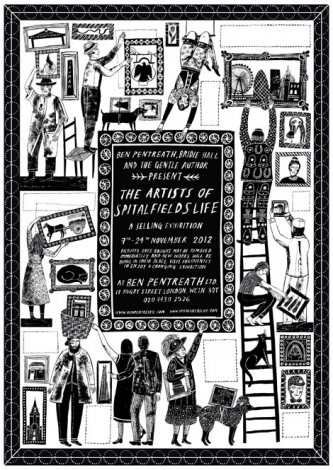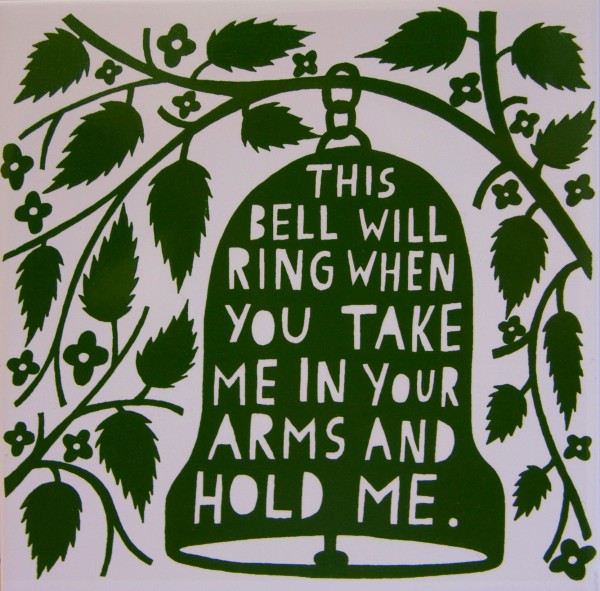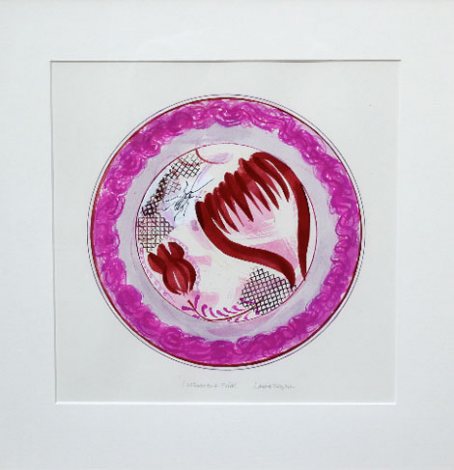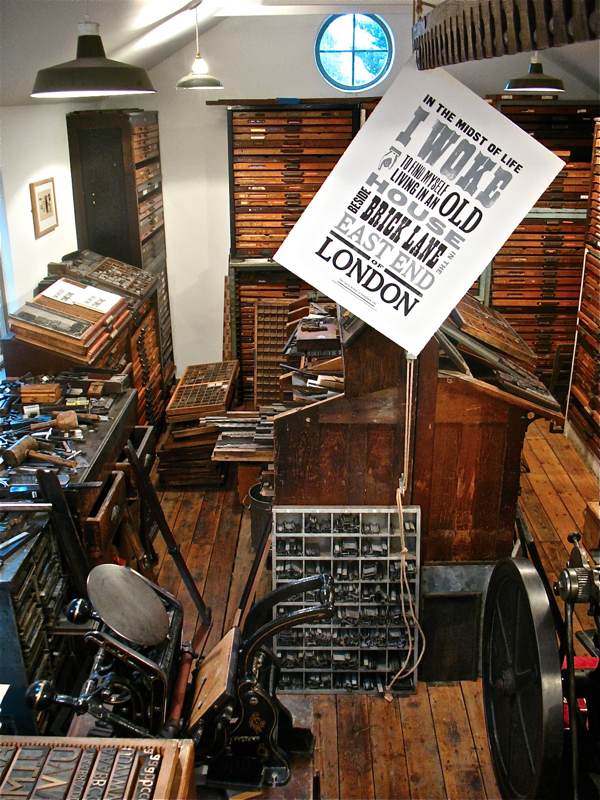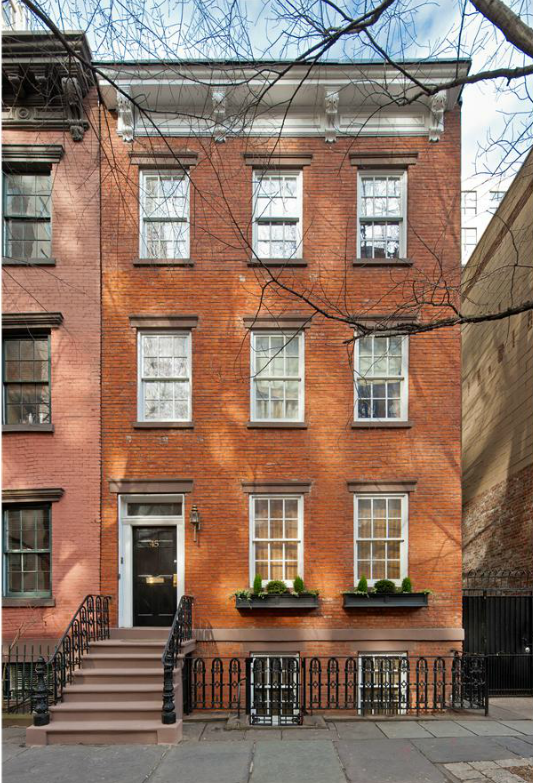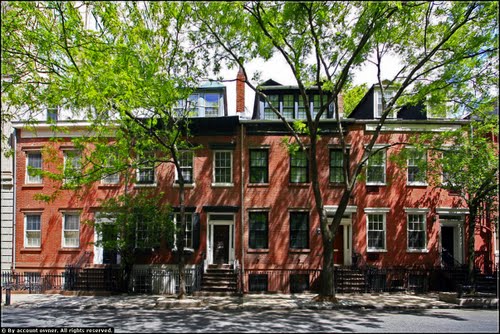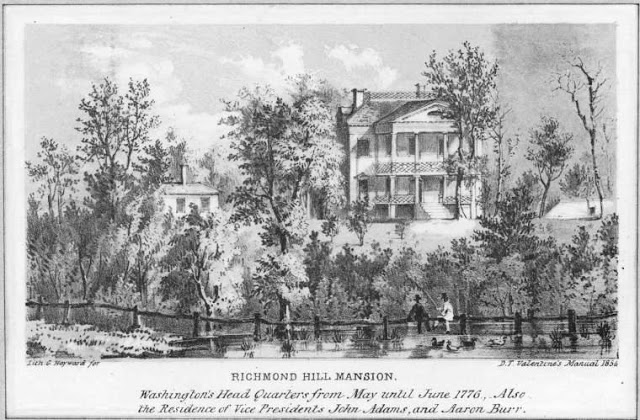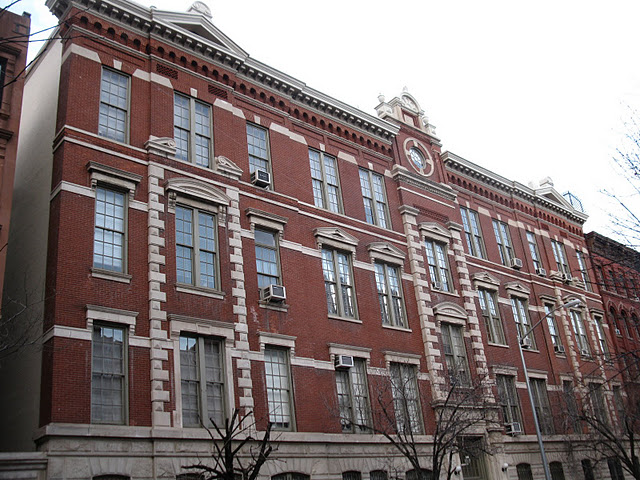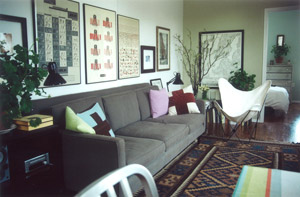Spitalfields then – and we are talking twenty years ago – felt like a place that time and tide had forgotten. The world of early 18th century London collided with crazy, hectic 20th century Brick Lane, and I learned that I loved each as much as the other.
-Ben Pentreath
It is important to note that the present boundaries of the proposed district encompass the remains of a small district which has always been, since its beginning, a distinct and separate neighborhood. Charlton, King and Vandam Streets are not only linked physically, but by a common history…The aesthetic quality of this happily surviving chapter of the early Nineteenth Century architecture is heightened by its unexpected juxtaposition to commerce and traffic. Its sudden revelation to the eye of the passerby from teeming Varick Street and rushing Avenue of the Americas is one of the most surprising visual treats in store for New Yorkers.
– From the 1966 NYC Landmarks Preservation Commission Historic District Designation Report
I have spent a lot of time over the last week thinking about my home – my special New York neighborhood perched between Greenwich Village, Soho and the Hudson River – the Charlton-King-Vandam Historic District. Intensely threatened by Superstorm Sandy, I was worried not only about my own property, but about the potential for loss, or really for change, in a pocket of New York that looks like time forgot it. Those three blocks have always been a magical place for me, even before I lived there, as they almost have the ability to transport you back to the past.
Around the same time, one of my favorite bloggers, architect-author-shop owner Ben Pentreath, put up a post on the Spitalfields neighborhood of London, special to him in its preservation of 18th century Georgian buildings and memorable as it represented his early youth in the city. Opening tomorrow, November 7, at his eponymous store on Rugby Street (which I visit whenever I am in London) is a collaborative group exhibition between Ben’s shop and The Gentle Author, representing Spitalfields artists. The Gentle Author’s blog has been featuring profiles of the artists all week and I can’t stop reading them!
While I won’t be making it to London, at least much of the work is available online, including Alice Patullo‘s fabulous poster for the group exhibition. It was the first piece to catch my eye, reminding me of a papercut, which the girls and I became obsessed with two summers ago.
And then there is artist Rob Ryan, with actual papercuts and some very funky Staffordshire dogs. I would love to buy this for my husband for our wedding anniversary.
Artist Laura Knight deconstructs familiar china patterns like blue willow…
…in her mixed media illustrations.
She even reimagines pink lustreware…
…which you already know is dear to my heart.
Justin Knopp‘s letterpress print is graphically riveting, but it is his printing studio that I am swooning over.
The exhibition features many other artists and details can be found here and here – it is really worth taking a look!
Personally, I am not familiar with the Spitalfields neighborhood, but it has rocketed to the top of my next time in London list (which will be this summer) as it is full of 18thc Georgian buildings, like this one on Fournier Street…
…the precursors to the Federal homes, built in the 1820s in New York City, on King Street…
…Charlton Street…
… and Vandam Street.
The district is so consistent as the majority of the remaining homes were erected in roughly the same period on the grounds of the former 26 acre Richmond Hill estate, which had been built in 1767 with a view over the Hudson River. George Washington and Vice Presidents John Adams and Aaron Burr all had turns living there but it was Burr who saw the economic opportunity in the changing residential tides of the city and planned to sub-divide it. He named the streets Burr for himself; King for Rufus King, a fellow U.S. senator; and Vandam for Anthony Van Dam, a wealthy importer and city alderman. Forced to leave the city after his duel with Alexander Hamilton, John Jacob Astor took over the property, paying Burr handsomely for it. Burr Street was re-named in memory of Dr. John Charlton, former president of the New York Medical Society and a trustee of Columbia University, who had died months earlier.
As the Landmarks Preservation Commission report states: The old houses on these streets are all that remain of a city plan, conceived and mapped in 1797, but almost completely developed between the years 1820 and 1829. The boundaries of this neighborhood were, originally, from the Hudson River (then at Greenwich Street) to MacDougal Street, and from Vandam to King Streets. This small enclave was a piece of “instant city” developed from one large country estate, by the great real estate operator of the day, John Jacob Astor.
The development of these streets in common gave them a continuity and homogeneity which still survives today not only visually, but in spirit as well. This is not Greenwich Village; this is not “downtown”; this is the Charlton-King-Vandam area.
In contrast to the almost pristine preservation of Charlton Street and a bit of grittiness on Vandam, the Landmarks Preservation Commission said it best: King Street has a different sort of charm; it has an infinite variety, the unexpected juxtaposition of Federal houses, Greek Revival houses, Anglo-Italianate, Roman Revival and eclectic buildings of the late Nineteenth Century. The early apartments and the public school still have a certain grandeur while the little Federal houses look cozy by comparison and the Greek Revival houses maintain their own distinct dignity.
Built in 1886-1887, my beloved Queen Anne style interloper at 29 King Street was once Public School Number 8 and served an absolute melting pot of immigrant nationalities. The rumour in the building was that it had become a school for wayward girls in the 1950s and in researching this post I found that to be true (I can’t wait to tell my girls – I think they’ll get a kick out of that). In the early 1980s the building was converted to condos and we were lucky enough ten-odd years later, to be at the right place at the right time at the bottom of the last major downturn in the real estate market, which was a long time ago now. To this day, older visitors will often call from the street, lost, asking where our apartment is in relation to the school building.
While the link between Spitalfields and the C-K-V Historic District is tenuous, in my head they became woven together, as both are places where the past informs the present. Funnily enough, Ben Pentreath lived in New York for five years, much of that time right down the block from us on King Street, although I never had the good fortune to meet him. As he said in a recent article in The Financial Times, his apartment there was the place where he “first experimented with a few strong fabrics and some contemporary furniture alongside old brown tables and chairs, and loved the results.” Here’s a tiny view of said apartment. In the face of so many eschewing traditional “brown” furniture these days and painting everything, I still love some of the old-fashioned brown stuff in the mix and I find it reassuring that he does too.
I am hoping for more views – or at least a bigger photo – in his brand new book English Decoration: Timeless Inspiration for the Contemporary Home, which I have seriously put on my holiday list. All the reviews have been just as good as I would expect (like the one here) and I cannot wait to get my hands on a copy.
If you are interested in reading more about the Charlton-King-Vandam Historic District there is so much information out there and I used the following sites in preparation of this post: The Greenwich Village Society for Historic Preservation, 1966 NYC Landmarks Preservation Commission Historic District Designation Report, The Story of Charlton Street, and the amazing Daytonian in Manhattan, including this, this and this.
All artist’s works via Ben Pentreath and Spitalfields Life.

